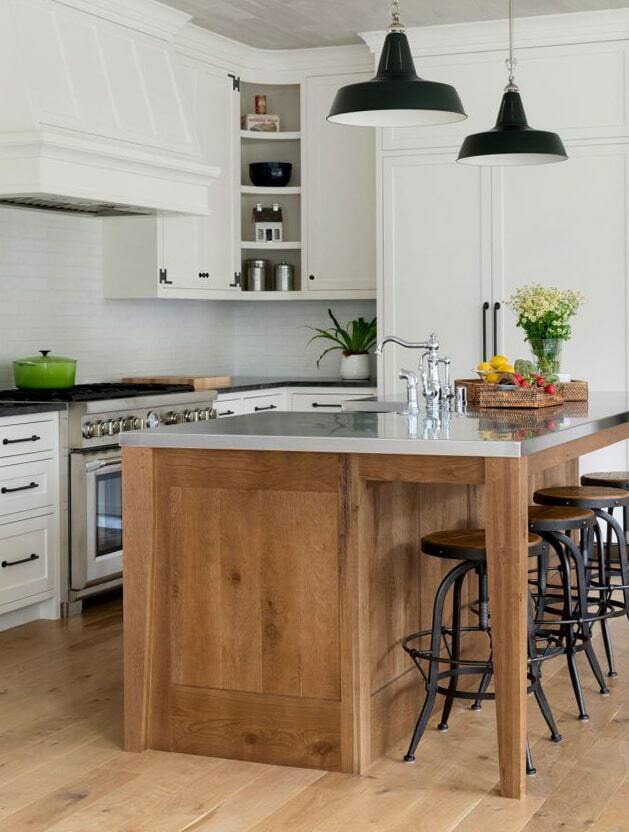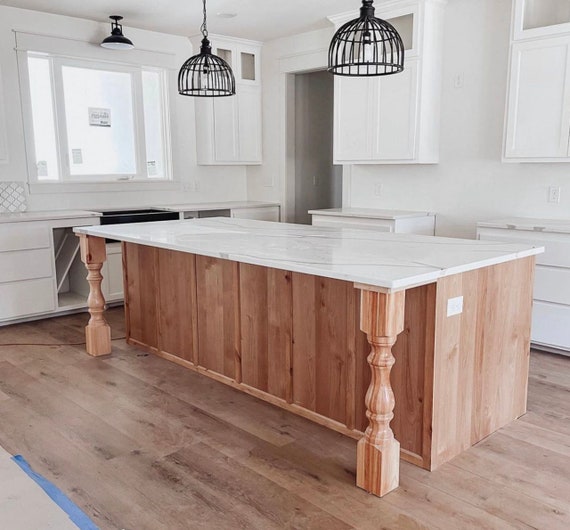The Best Kitchen Island Leg Options for Modern and Traditional Kitchens
The Best Kitchen Island Leg Options for Modern and Traditional Kitchens
Blog Article
Leading Factors To Consider When Choosing a Cooking Area Island Leg for Modern Kitchen Interiors
In the realm of contemporary kitchen interiors, the choice of a kitchen area island leg is crucial, influencing both aesthetic appeals and functionality. As these aspects intertwine, they elevate even more inquiries about exactly how to achieve the excellent equilibrium in between design and practicality, leaving one to ponder the effects of each decision on the general kitchen experience.
Material Options
When it concerns picking a kitchen area island leg, material selections play a critical duty in both aesthetic appeals and functionality. kitchen island leg. One of the most usual materials include timber, metal, and composite alternatives, each offering prospective drawbacks and distinctive advantages
Timber is preferred for its warmth and timeless appeal, supplying a timeless look that enhances various cooking area styles. It is highly functional, enabling modification in terms of shades and surfaces. Timber might call for even more upkeep to prevent bending or damage from dampness.
Steel, on the various other hand, brings a commercial and modern-day style to kitchen area islands. Stainless steel and wrought iron are prominent options, recognized for their longevity and resistance to wear. They can withstand the rigors of everyday use but may do not have the heat related to timber.
Composite products, such as engineered timber or synthetic blends, provide a balance between cost, resilience, and aesthetics. These options are typically created to resemble the look of all-natural products while offering resistance to spills and scrapes.
Eventually, the selection of product ought to line up with the overall kitchen design and intended use, ensuring that the cooking area island leg is both aesthetically appealing and practical.
Design And Style
The design and style of a kitchen island leg substantially add to the overall aesthetic of the room, complementing the picked material. When picking the leg layout, consider the building design of the kitchen. Smooth, minimal legs made of stainless steel or acrylic harmonize with modern layouts, while ornate, turned wood legs improve conventional or farmhouse appearances.
Additionally, the coating of the leg can influence the aesthetic impact; a polished chrome or matte black coating may stimulate contemporary elegance, while troubled wood talks to rustic appeal. The leg's form also plays an important role-- straight, angular kinds communicate an even more industrial feel, whereas curved or tapered legs present a softer, more inviting appearance.
Incorporating attractive aspects, such as decorations or carvings, can include character and personality to the kitchen area island, more improving its role as a focal point. Inevitably, the picked leg design must not only line up with the total kitchen layout yet additionally mirror the homeowner's personal preference, making certain that the kitchen area island comes to be a unified and functional focal point within the modern-day kitchen interior.
Elevation and Percentages
Achieving the best height and percentages for a kitchen island leg is vital for both functionality and looks. Kitchen islands usually range in height from 28 to 36 inches, depending upon their meant use-- whether as a food preparation surface area, eating location, or work area. Requirement kitchen counter height is roughly 36 inches, making it crucial that the legs you select enhance this height to supply a seamless, incorporated look.
Percentages also play a crucial role in the aesthetic equilibrium of the cooking area. The size and weight of the leg must be in harmony with the total style of the island - kitchen island leg. A slim leg might be appropriate for a minimalistic or contemporary island, while an extra substantial leg may be required for her response rustic or standard layouts. Furthermore, take into consideration the spacing between the legs; ample distance ensures comfort and simplicity of motion around the island.
When picking the height and proportions of the kitchen island leg, bear in mind the general design theme of your cooking area. This focus to information not only enhances the functionality of the space yet likewise contributes to a natural and aesthetically appealing interior decoration.
Security and Support
Constantly making certain security and assistance in cooking area island legs is vital for both safety and security and functionality. A sound kitchen area island must withstand everyday use, including weight from devices, cooking, and social gatherings. The option of legs ought to focus on robust products and styles that can offer adequate assistance.
When assessing security, consider the leg's material-- wood, aluminum, or steel commonly use premium stamina compared to lighter options. Additionally, the layout ought to feature a wide base to disperse weight evenly and decrease the danger of tipping or tottering. As an example, legs designed with an A-frame or cross-bracing can significantly enhance stability.

Including these factors to consider will certainly not only enhance the total safety and security of the kitchen area room however likewise improve the long life and functionality of the kitchen island, making it an important centerpiece in modern-day cooking area interiors.
Finishing Touches
When it pertains to finishing a cooking area island, thoughtful finishing touches can considerably boost both its aesthetic allure and performance. Choosing the best leg design is crucial, however complementing it with suitable details can change the whole room. Think about including attractive aspects such as toe kicks or baseboards that match the cabinets or floor covering to create a seamless look.

A natural shade scheme and material choice will certainly elevate the kitchen area island, making it an exciting focal point. By paying attention to these ending up touches, homeowners can produce a kitchen island that is both useful and lovely, catering to their lifestyle and layout preferences.
Conclusion

In the world of contemporary cooking area insides, the option of a cooking area island leg is pivotal, influencing both appearances and capability.The style and layout of a kitchen island leg dramatically add to the general visual of the space, enhancing the chosen product.Attaining the best elevation and proportions for a kitchen area island leg is essential for both capability and aesthetic appeals.Consistently guaranteeing security and assistance in kitchen area island legs is crucial for both safety and capability.In recap, choosing a cooking area island leg for modern interiors calls for mindful consideration of product selections, design style, elevation, proportions, and security.
Report this page